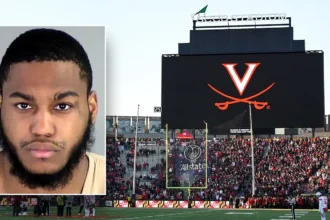Israel has received the remains of another individual held in Gaza following the October 7, 2023 attack, marking a significant development in the ongoing exchange of hostages between Israel and Hamas. The transfer comes amid a delicate cease-fire and complicates efforts to implement a broader peace deal mediated by the United States and other international actors.
According to Israeli authorities, the coffin was handed over through the International Committee of the Red Cross and has been sent for forensic identification. The return represents the tenth body transferred under the terms of the agreement covering 28 deceased captives. While the identity has not been publicly disclosed pending formal documentation, the handover is seen as a symbolic moment for hostage-holding families and the wider Israeli public.
The initial hostage deal, advocating an end to war under a 20-point plan backed by President Donald Trump, included terms for living captives and remains of the deceased. Under the arrangement, 20 living hostages were released earlier in the week in exchange for around 2,000 Palestinian detainees. The return of bodies remains one of the key sticking points of the truce, alongside border openings, aid flows, and reconstruction in Gaza.
Hamas issued a statement earlier, saying one of its units had recovered a body from a rubble-filled tunnel in Khan Younis and prepared it for transfer. Israeli security sources, while acknowledging the handover, argue that Hamas still holds detailed information about the location of many deceased captives and accuse the group of delaying the process. Hamas counters by citing the complexity of search operations amid extensive destruction, unexploded ordnance, and restrictions on excavation equipment entering Gaza.
The delivery of the body is expected to reignite debate in Israel over the pace and sincerity of the truce implementation. For families whose loved ones remain missing or unidentified, the process has become a source of frustration and heartbreak. Many say the government’s priority must be ensuring full accountability and the return of all bodies before normalising the situation in Gaza.
Israeli Prime Minister’s Office issued a brief statement affirming receipt of the remains and emphasized the need for Hamas to fulfil its obligations in full. At the same time, Israel signalled that any further delay in the handover process could impact other elements of the truce agreement. Among those watching closely are regional mediators, who say the exchange is critical for maintaining momentum toward peace and rebuilding.
For Gaza, the situation remains dire. Aid agencies continue to warn of a humanitarian crisis, with severe malnutrition, limited access to basic services, and ongoing displacement. The return of remains may ease tensions momentarily, but without a functioning recovery and aid mechanism, the cease-fire risks faltering.
Regional and international actors are watching the situation closely. Turkey’s foreign minister flagged concern that Israel might use procedural delays as justification to resume military operations, which could unravel the fragile pause in fighting. The U.S., having brokered the initial framework under President Donald Trump, is actively monitoring compliance from both sides and pushing for swift progress.
The next phase of the deal remains unclear. While the return of living hostages was completed, the work of recovering bodies and transitioning to reconstruction and governance in Gaza still faces major obstacles. Israeli military officials have noted that some bodies may lie beneath collapsed buildings or tunnel systems inaccessible without heavy machinery. Hamas officials say they require safer corridors and siege-lifting measures to proceed.
Families of the missing say they will not relax their protests or symbolic actions until all fallen captives are brought home. In many households, the return of a body is met with both relief and renewed grief, as the hope of finding a loved one alive fades but closure still remains distant.
Several scenarios now appear possible. One is a gradual progression toward full implementation of the truce: more bodies exchanged, borders reopened, and aid scaled up. Another is a partial breakdown, where stalled handovers trigger suspension of aid flows, renewed fighting, or border closures. Israel has already stated it will hold Hamas accountable for delays and may pause other elements of the agreement.
On the ground, recovery teams in Gaza are working with the Red Cross and Israeli signals to locate bodies, often amid rubble and unexploded ordnance. The challenges of identification, missing documentation, and degraded remains make each case complex and time-consuming. Meanwhile, Israel’s forensic institute must confirm identities before notifying families, a process that can further delay closure.
In sum, while the transfer of another body marks a step forward in the hostage exchange process, it also lays bare just how fragile and contested the entire cease-fire and peace framework remains. Hundreds of thousands of families on both sides await concrete outcomes, not symbolic gestures.











